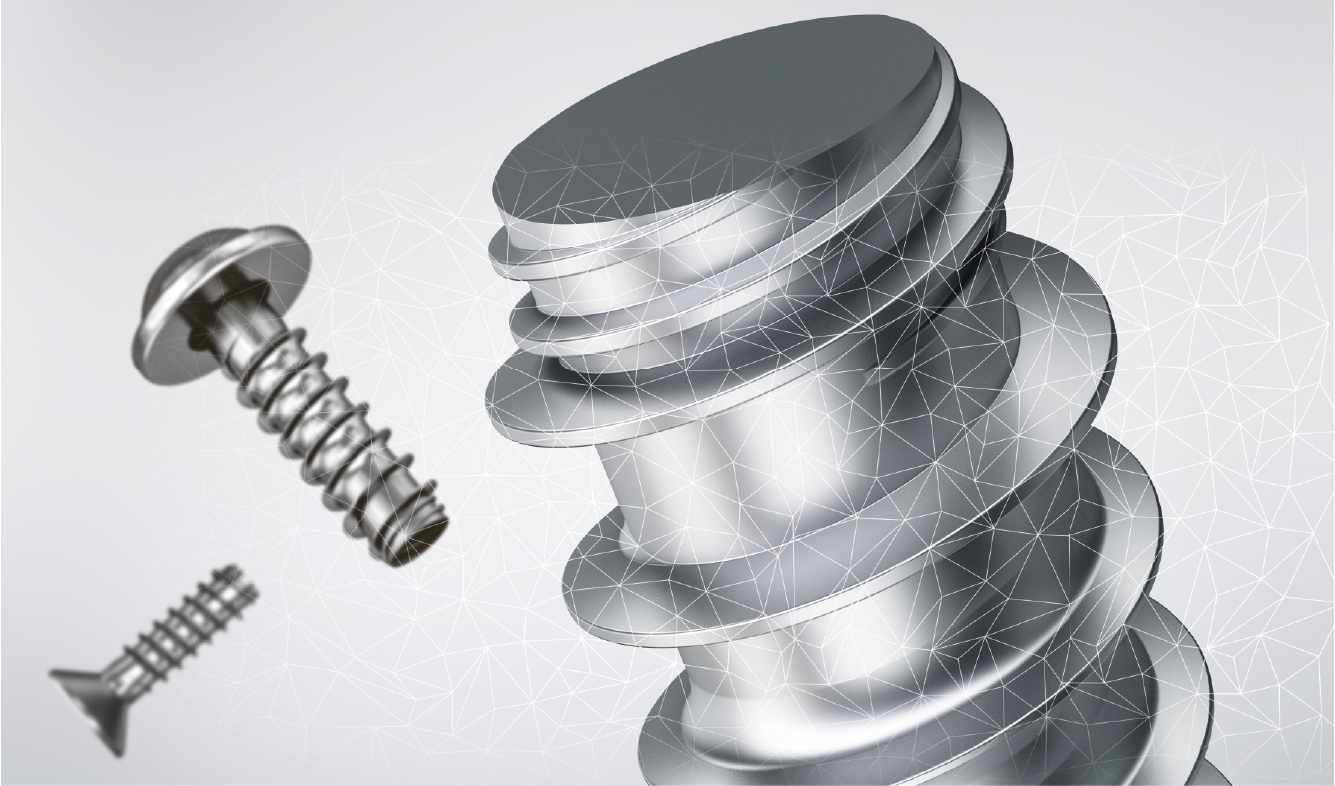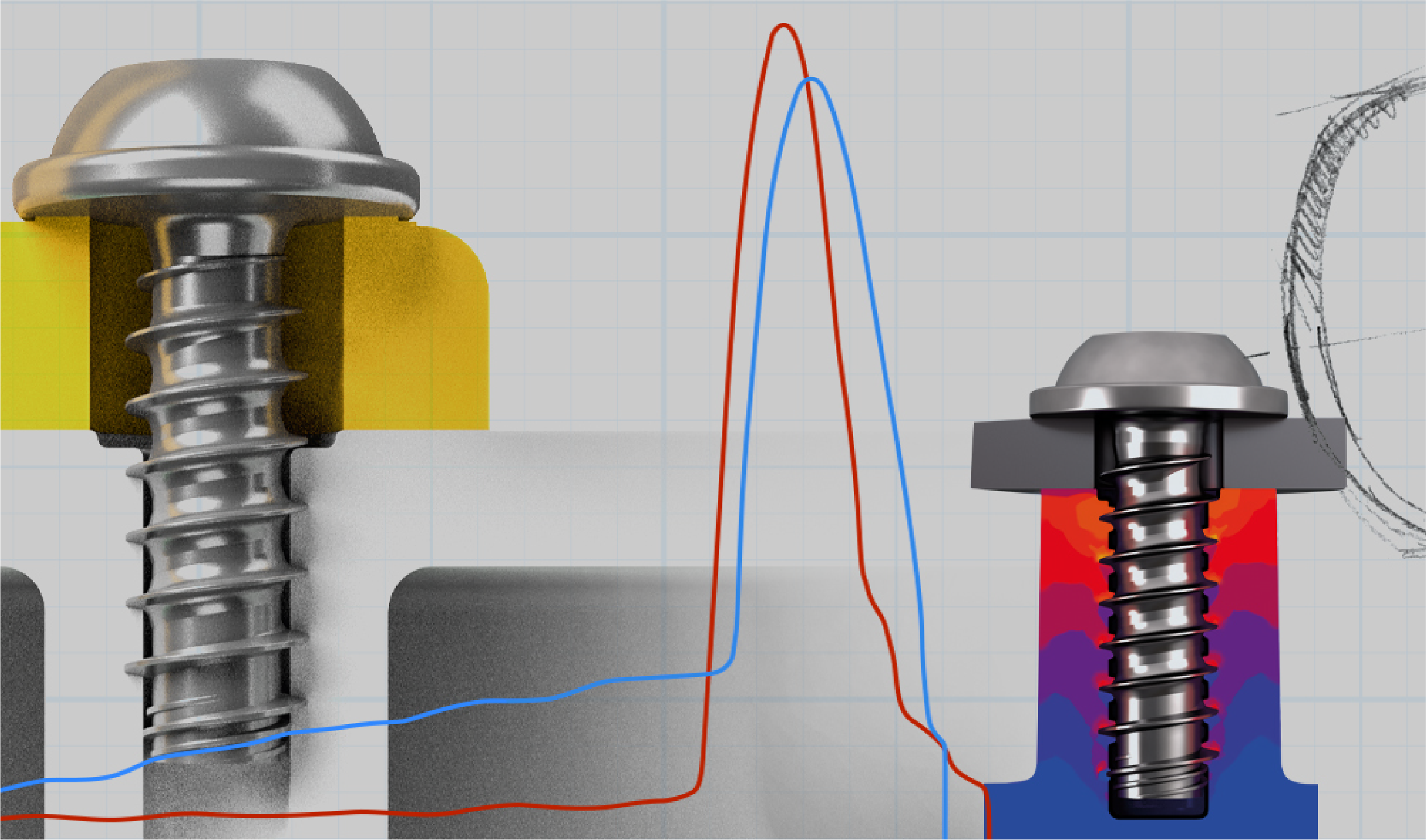Can standard screws be used for fastening into plastics?
The increased use of plastics in assemblies has provided engineers with a whole host of benefits over many decades, not least in terms of achieving important weight and cost savings. However, the material characteristics of the thermoplastics and thermosetting plastics, which are commonly used in assemblies, does require a different approach to the fasteners compared to using metals, to ensure the strength and long term performance of the joint is optimised.
It may be assumed that, as all thread-forming screws perform the same purpose, i.e. forming a thread in the material into which the screw is being inserted, that there is not a great deal of difference between the various types available. However, as is the case with all fasteners, the devil is in the detail, and even very minor differences between one fastener and another could mean the performance capabilities of each are vastly different.
The evolution of fasteners for plastics has ensured design engineers can create strong connections in plastics with confidence. EJOT has been a driving force in the new generation of these products over the last four decades, and today its fasteners including the EJOT EVO PT continue to set the standard.
But why shouldn’t a standard thread-forming screw, such as those you would use for metals, be used when fastening into plastic? The main reason is due to the different characteristics of the fastener’s thread.
Why a narrower thread profile bosses it
When fastening into metal, EJOT ALtracs and SHEETtracs self-tapping screws will often meet the brief. These work well in metal sheets thanks to their wide thread profiles (or flank angles), typically at 60° and shallow threads, which is often described as a coarse threadFasteners specially designed for plastics like the EJOT EVO PT, however, have different thread profiles which are narrower. Rather than a thread profile angle of 60°, fasteners for plastic are more likely to feature a thread angled at between 30° and 48°.
The narrower thread of these fasteners reduces radial stress and expansion on the plastic boss when they are inserted which delivers improved fastener performance. In addition, the reduction in radial stress means that smaller bosses can be used compared to when using standard screws. This can deliver cost savings for the assembly through a reduction in material use and moulding cycle times.
Increased pull-out resistance
Fasteners which are purpose-designed for plastics also deliver an increased pull-out strength. This is chiefly because they have a smaller minor diameter – the thinnest diameter of the fastener measured from the thread’s roots, rather than the crests – and a higher thread profile which engages more effectively with the plastic material in the walls of the boss.When axial load is applied to the fastener, the plastic boss forming the hole is subjected to shear in the area between the minor diameter and the major diameter (the crests of the thread). The higher thread profile of special fasteners means there is a larger volume of material for the thread to engage with, which in turn increases its pull-out performance.
Reducing the potential for boss damage
During the insertion process, radial force (FRAD) is generated which creates outward stress and can damage the boss. This would, of course, mean the strength of the connection is compromised and the assembly as a whole would fail quality checks.The narrow thread profile of special fasteners for plastics has a major benefit here. Whilst there is no difference between a 60° thread and a 30° thread in terms of the amount of material being displaced during the fastener’s insertion, the radial force of the narrower thread is only around half that of the wider thread. Hence, less potential for boss damage.
Conclusion
Using standard screws in plastic is a huge risk because they are not designed to be compatible specifically with the material. This can lead to poorer overall performance of the joint and a risk of damage to the boss.A far better approach is to make use of the wide range of special fasteners for plastics developed by EJOT. These not only provide greater reliability in respect of the fastener’s performance but also have the potential to achieve significant cost savings for assemblies in the long term.








